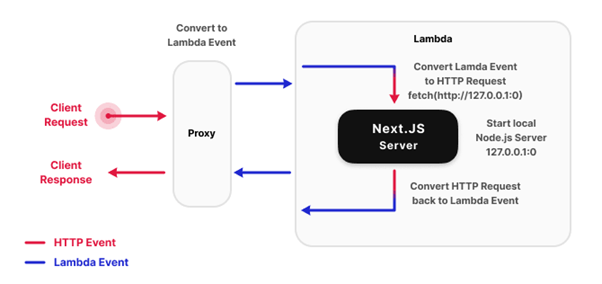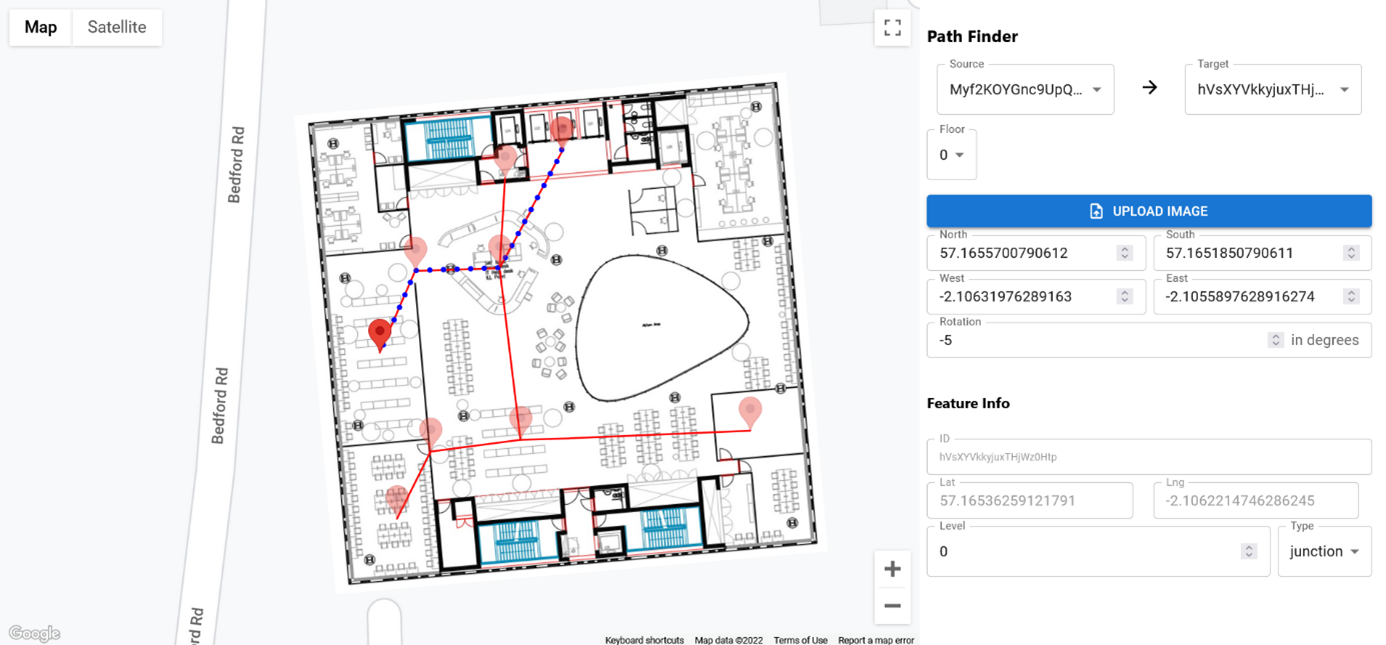The Future
From Prototype to Deployed Product

Initial Proof of Concept Screenshot

Accessibility
For the finished product we intend to have translations in different languages available for both the text and the text-to-speech functionality. As the node descriptor (e.g., door, lift, stairs) is picked from a drop-down menu, the instructions generated to direct a user from node to node will always be created from a set combination of nodes and directions. Thanks to this we can ensure that a complete translation for each possible instruction will always be provided. As node descriptors are implemented by individual organisations, we have no way of knowing what every possible node descriptor will be. Therefore, we cannot guarantee a translation of each node descriptor, but we can offer translations of these for a small fee.
In order to ensure that AtRoom is applicable to as large a user base as possible, the website will provide a text-to-speech instruction set tailored to the individual's needs. Whilst the website and instruction sets are developed in English, an end user will have the opportunity to relay these instructions in a common language of their choice. As the predicted user base of AtRoom will have a significant student population - many of whom will be international students - this will ensure that the majority of beginners in the English language are able to access instructions in their native language.
As discussed before, AtRoom values feedback from all end users and as such, the website's user interface will be tailored to suit the needs of as many user groups as possible. This will be made possible by collecting surveyed data from various age groups, levels of competence with technology etc.
Adaptability
Because AtRoom aims to enter a market with a large number of unknowns, we are working from a blank canvas and there is no clear direction or standard to be followed. While there is a market for general navigation, the market for indoor navigation is still extremely small due to the lack of mainstream applications with indoor navigation features. Although there are positives in this scenario – mainly the idea that we can capitalise on a small market with high growth potential – there are significant drawbacks too. The main problem here is the lack of an established user base to market the website to. Securing participants from varying demographics will be an initial challenge to overcome for AtRoom, but one that is necessary, since user feedback is essential to the success of the fully deployed product. Due to the lack of a previously established market, we will be unable to fully predict market changes and trends and will thus have to make adaptations as we go along. After several years of establishment, AtRoom will have more data (and likely competitors) to forecast any potential product changes necessary and implement them in advance.
Future Development
As AtRoom grows (alongside our user base), we will need to make changes inside the company. We will undoubtedly have to increase our server capacities which will allow more users to access the website without risk of lagging or crashing. We will also require increased storage capabilities in order to store more user data and map data. We will also require more employees to help implement the features mentioned above, continue developing new features and providing general maintenance and bug fixes.
In order to expand AtRoom's user base we will need to invest in some form of advertising to reach more potential customers, and we will also require investors to acquire the resources necessary to grow AtRoom to its full potential. Additionally, we will need to prioritise implementing translation features if we want to expand to a non-English speaking market. In an age where there is more information on accessibility than ever, there is also no excuse for not implementing accessibility features wherever possible, as fast as possible.